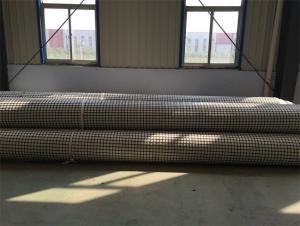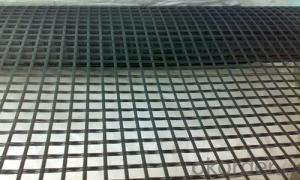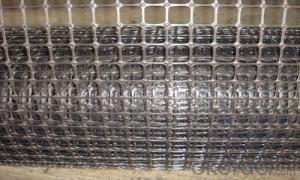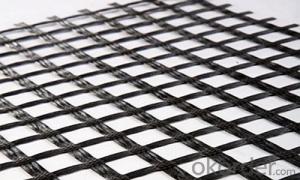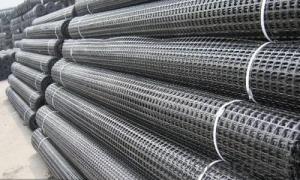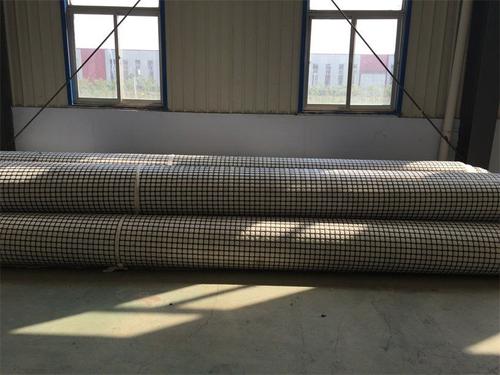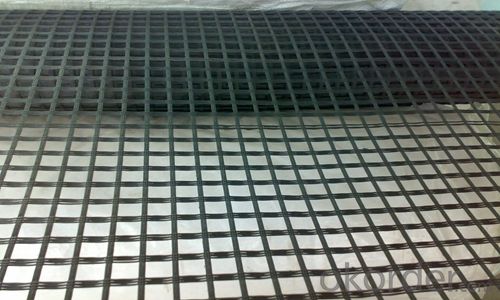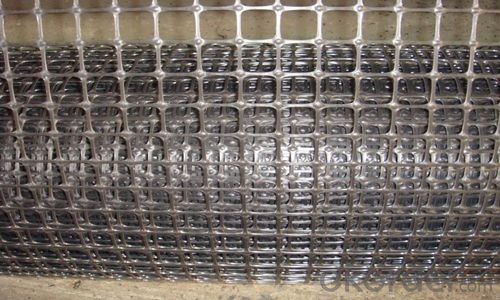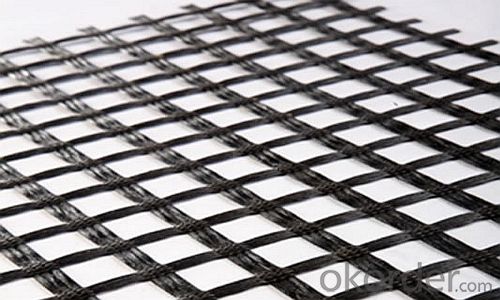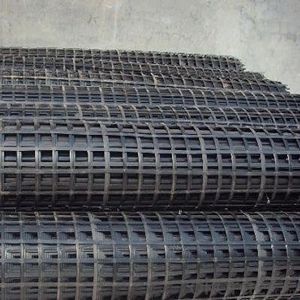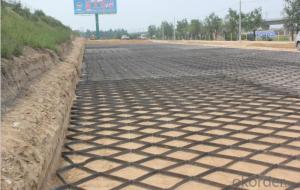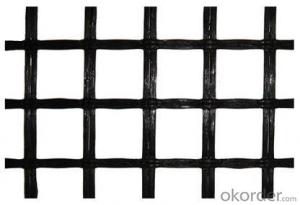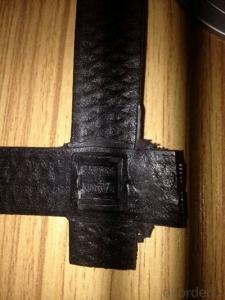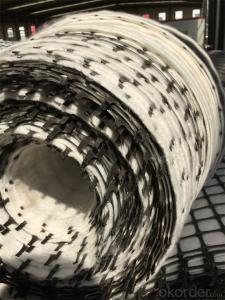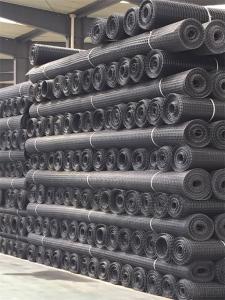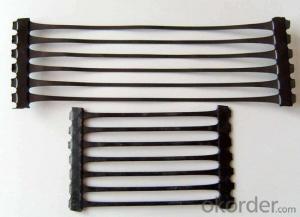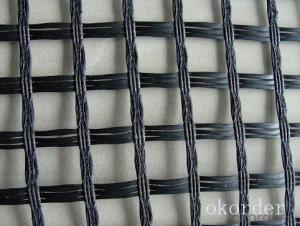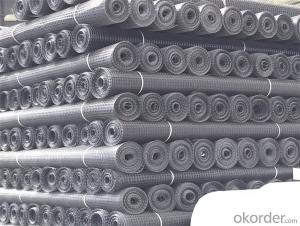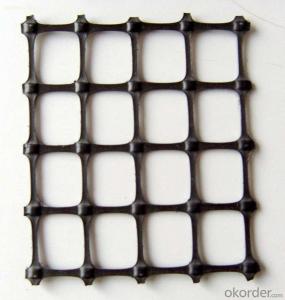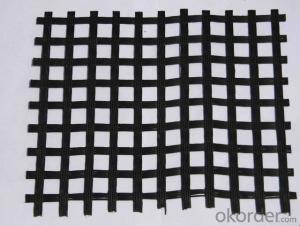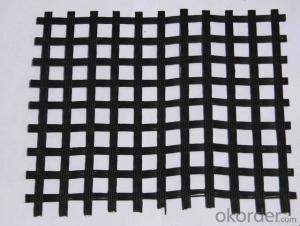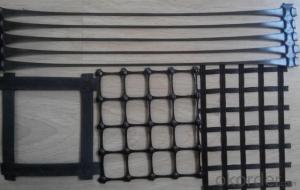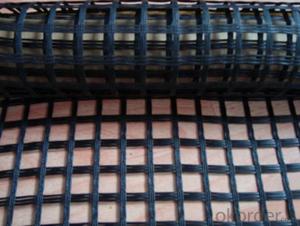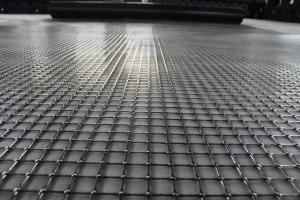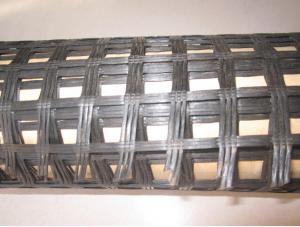Geocells Material Biaxial Geogrid for Dams in Civil Engineering Construction
- Loading Port:
- China main port
- Payment Terms:
- TT OR LC
- Min Order Qty:
- 1000 m²
- Supply Capability:
- 10000000 m²/month
OKorder Service Pledge
OKorder Financial Service
You Might Also Like
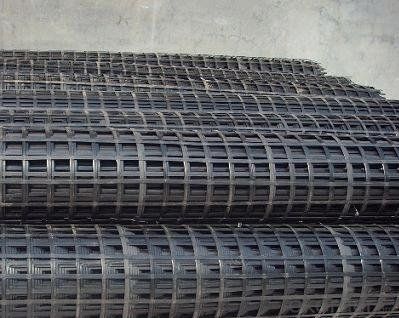
Introduction
WEIGHT
300G/SQM
500G/SQM
ELONGATION AT BREAK
3%
TENSILE STRENGTH IN KNOT
5KN/M
10KN/M
WIDTH:
1--6M
CNBM offers BaseGrid biaxial geogrids for base reinforcement. They are manufactured by welding or stitching together two layers of extruded, polypropylene, flexible geogrids to create a continuous sheet that will not separate. The two grids are offset before welding or stitching, creating a stable, continuous sheet with random-sized apertures for improved soil interaction.
Our Service
Quality assurance
1.On a regular basis or as per your request,we entrust national testing agencies to conduct quality inspections
2. Strictly in accordance with the ISO9001-2008 international quality system standard,we monitor and manage the whole process throughout production,quality testing,and measurement to ensure product quality
3. For quality-related construction delay or substandard construction(except for damage or losses due to customer’s responsibility or irresistible natural disasters),we have refunding,replacement,and repair services.We will respond to customers’ feedbacks on quality issues within 24 hours.
Packaging & Shipping
Packing: PLASTIC FILM INSIDE, AND WOVEN BAG OUTSIDE
Shipping: About 15 days after receipt the deposit
FAQ:
Q: What kind of payments does jenor support?
A: T/T, L/C, Cash are accepted.
Q: Do you charge for the samples?
A: Accordeing to our company policy, the samples are free, we only charge the freight fee. And we will return the freight fee during the next order.
Q: Can you produce according to customers' design?
A: Sure, we are professional manufacturer, OEM and ODM are both welcome.
Q: Do you have other products?
A: Yes, please check the pictures:
- Q: How do geogrids improve the performance of geogrid-reinforced earth walls?
- Geogrids improve the performance of geogrid-reinforced earth walls by providing reinforcement and stability to the soil. They distribute the loads applied to the wall more evenly, reducing the risk of wall failure and enhancing its overall strength. Additionally, geogrids increase the friction between soil particles, preventing soil movement and improving the wall's resistance to lateral pressures.
- Q: Can geogrids be used in stabilization of mine tailings ponds?
- Yes, geogrids can be used in the stabilization of mine tailings ponds. Geogrids are often employed to reinforce and stabilize soil, preventing erosion and promoting the overall stability of the area. In the case of mine tailings ponds, geogrids can be used to enhance the integrity of the pond's walls and base, ensuring that the containment structure remains secure and prevents any leakage or environmental hazards associated with mine tailings.
- Q: Is there a geogrid in the transition section of Railway
- The railway section is to be used in the geogrid
- Q: Can geogrids be used in water drainage applications?
- Yes, geogrids can be used in water drainage applications. Geogrids are commonly used in civil engineering projects to improve soil stability and reinforce the ground. They can be installed in various types of water drainage systems, such as retaining walls, embankments, and underground drainage pipes, to enhance their overall performance and prevent soil erosion.
- Q: What are the cost considerations for using geogrids in construction projects?
- Some cost considerations for using geogrids in construction projects include the initial cost of purchasing and installing the geogrids, the potential cost savings in terms of reduced excavation and material requirements, the long-term durability and maintenance costs, and the overall benefits and value that geogrids can provide to the project.
- Q: Are geogrids suitable for use in reinforced soil slopes?
- Yes, geogrids are suitable for use in reinforced soil slopes. Geogrids are commonly used to enhance the stability and strength of soil slopes by providing reinforcement and preventing soil erosion. They are designed to distribute load and improve the overall performance of the slope, making them an effective solution for reinforced soil slopes.
- Q: What are the design considerations for geogrids in reinforced soil slopes?
- Some of the key design considerations for geogrids in reinforced soil slopes include the selection of appropriate geogrid material and strength, determining the required spacing and orientation of the geogrid layers, considering the slope geometry and stability requirements, evaluating the soil properties and potential for settlement and deformation, assessing the long-term durability and performance of the geogrids, and ensuring adequate constructability and installation techniques. Additionally, factors such as water drainage, environmental conditions, and cost-effectiveness should also be taken into account during the design process.
- Q: Can geogrids be used in reinforced earth bridge abutments in liquefaction-prone areas?
- Yes, geogrids can be used in reinforced earth bridge abutments in liquefaction-prone areas. Geogrids are commonly used as reinforcement materials in geotechnical engineering to improve the stability and strength of soil structures. In liquefaction-prone areas, where the soil becomes unstable and loses its strength during seismic events, geogrids can provide additional support and prevent potential failures in bridge abutments. By reinforcing the soil, geogrids help to distribute and resist the lateral forces caused by liquefaction, ensuring the stability and safety of the bridge abutments in these vulnerable areas.
- Q: What are the design considerations for geogrid reinforcement?
- Some design considerations for geogrid reinforcement include the type and strength of the geogrid material, the required level of soil stabilization, the anticipated loads and stresses on the reinforced soil structure, and the desired lifespan of the structure. Other factors to consider include soil characteristics, installation and construction procedures, and environmental conditions. Additionally, the design should account for factors such as slope stability, drainage, and potential settlement.
- Q: Can geogrids be used in reinforced earth bridge abutments?
- Yes, geogrids can be used in reinforced earth bridge abutments. Geogrids are commonly used in the construction of bridge abutments as they provide reinforcement and stabilization to the soil. They help distribute the load and increase the overall strength of the structure, making it more resistant to settlement and lateral forces. Geogrids are an effective solution for enhancing the stability and durability of reinforced earth bridge abutments.
Send your message to us
Geocells Material Biaxial Geogrid for Dams in Civil Engineering Construction
- Loading Port:
- China main port
- Payment Terms:
- TT OR LC
- Min Order Qty:
- 1000 m²
- Supply Capability:
- 10000000 m²/month
OKorder Service Pledge
OKorder Financial Service
Similar products
Hot products
Hot Searches
Related keywords
